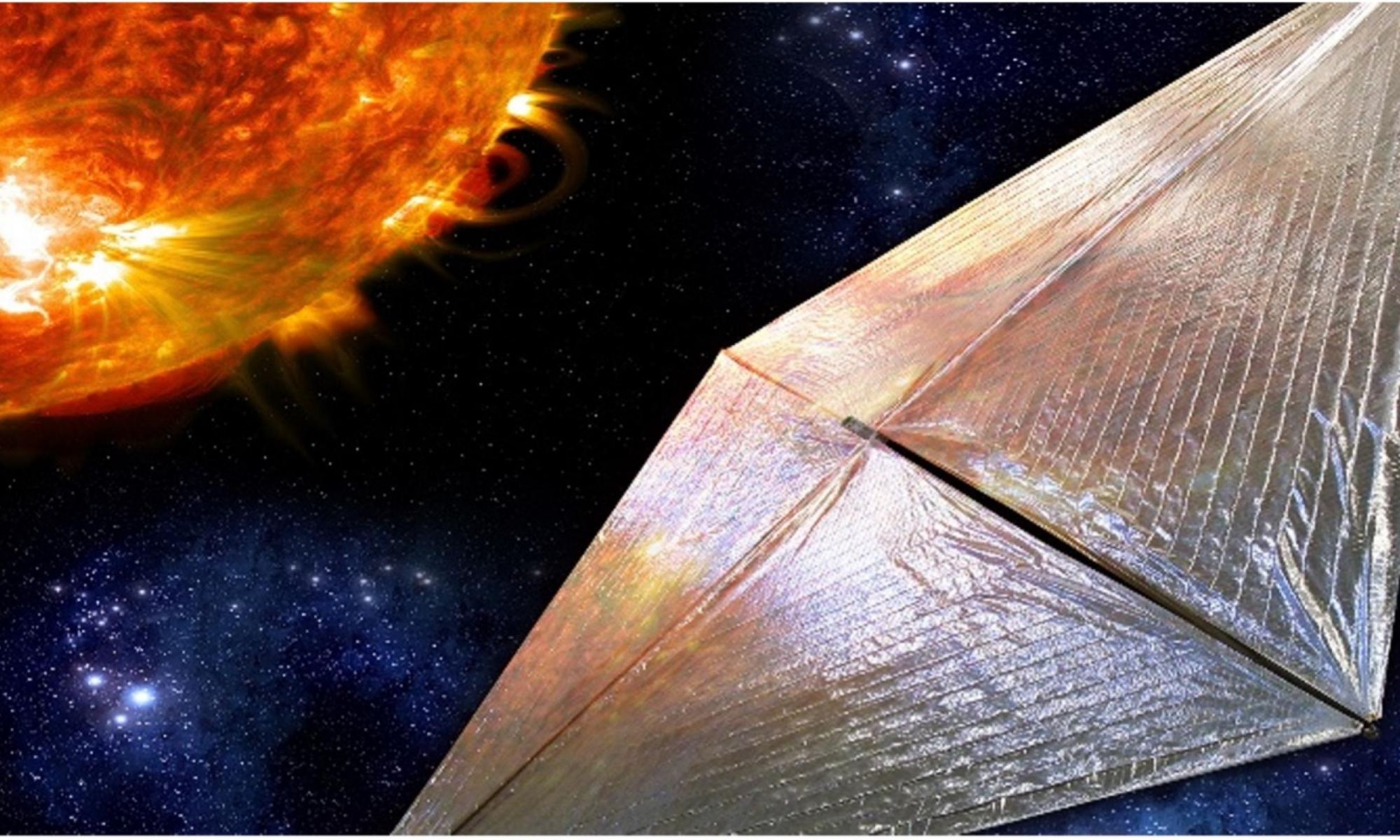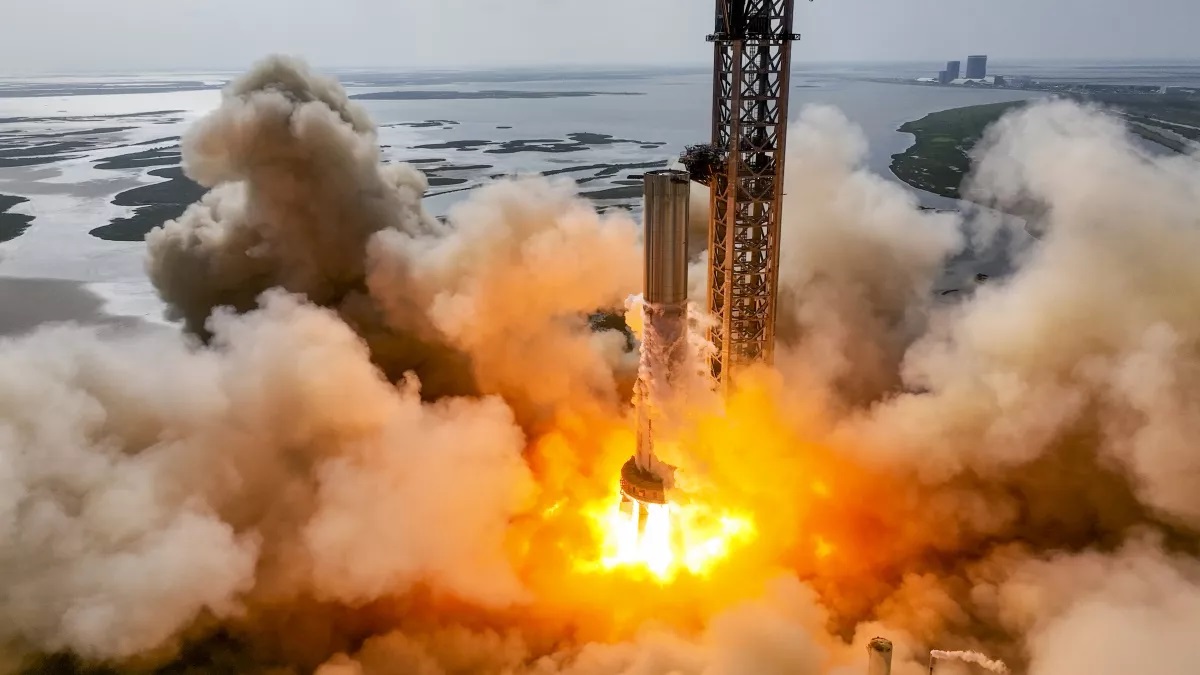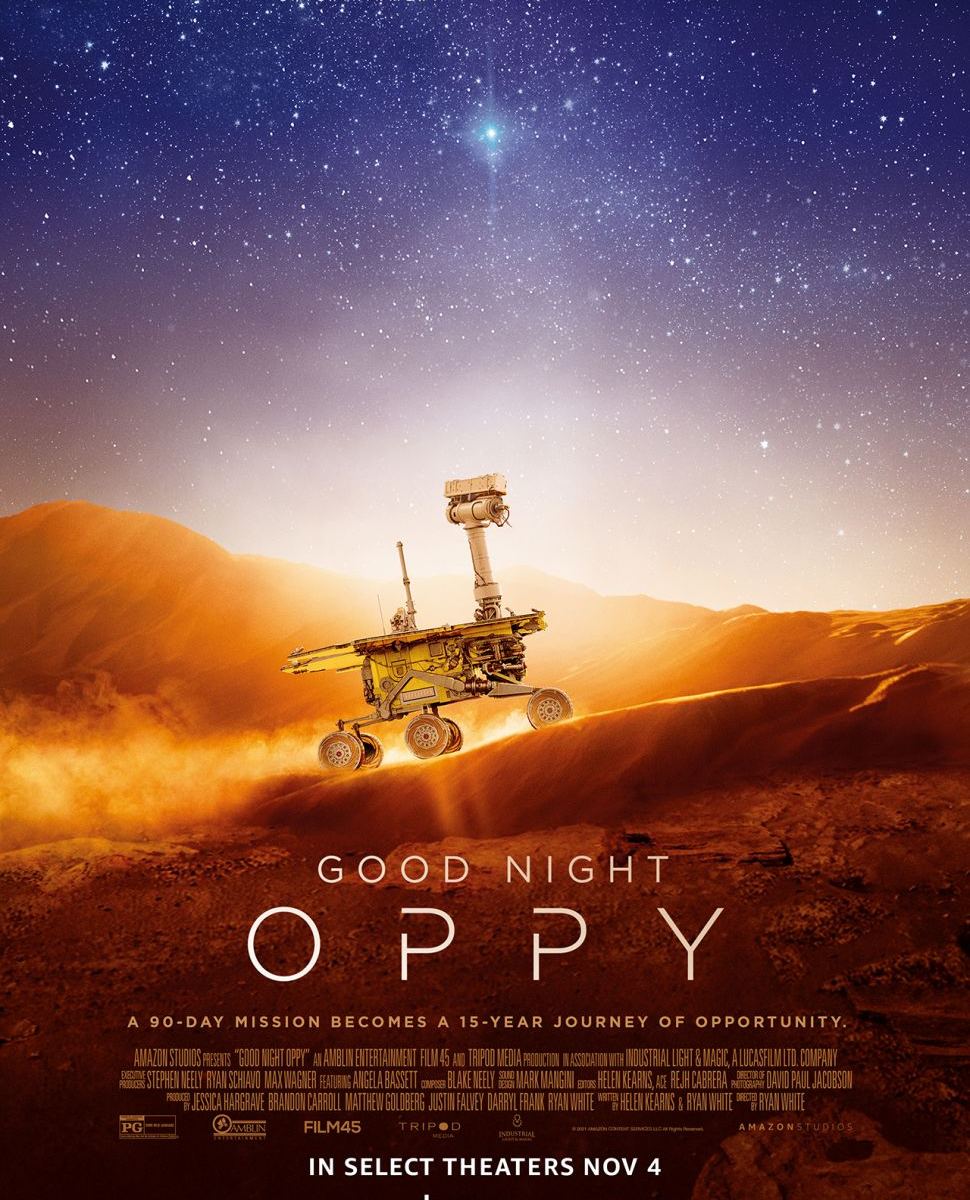In a recent study published in The Planetary Science Journal, a pair of researchers led by The Carl Sagan Center at the SETI Institute in California investigated the potential origin for the thick regolith deposits on Uranus’ moon, Miranda. The purpose of this study was to determine Miranda’s internal structure, most notably its interior heat, which could help determine if Miranda harbors—or ever harbored—an internal ocean.
Continue reading “Scientists Investigate Potential Regolith Origin on Uranus’ Moon, Miranda”NASA Just Tested a new Engine That Will Launch Artemis V and Beyond

On November 16th, NASA launched the first mission of the Artemis Program (Artemis I), which splashed down three and a half weeks later. This uncrewed mission saw the Space Launch System (SLS) send an Orion spacecraft far beyond the orbit of the Moon, establishing a new record for distance traveled by a mission and the amount of time spent beyond Low Earth Orbit (LEO). Powering the core stage of the SLS were four Aerojet Rocketdyne RS-25s, the same engines used by the Space Shuttle – known as the Space Shuttle Main Engine (SSME).
By the end of the decade, NASA plans to mount a total of six Artemis launches that will include crewed missions to the surface, the creation of the Artemis Basecamp, and the deployment of the Lunar Gateway. NASA also plans to upgrade key components in the mission architecture along the way, which include replacing the Space Shuttle Era engines with the newly-designed RS-25E. On December 14th, NASA tested this engine for the first time at the Stennis Space Center in Mississippi, completing a hot fire test that lasted for just under three and a half minutes (209.5 seconds).
Continue reading “NASA Just Tested a new Engine That Will Launch Artemis V and Beyond”What Kind of an Impact did DART Have on Dimorphos? The Science Results are Here
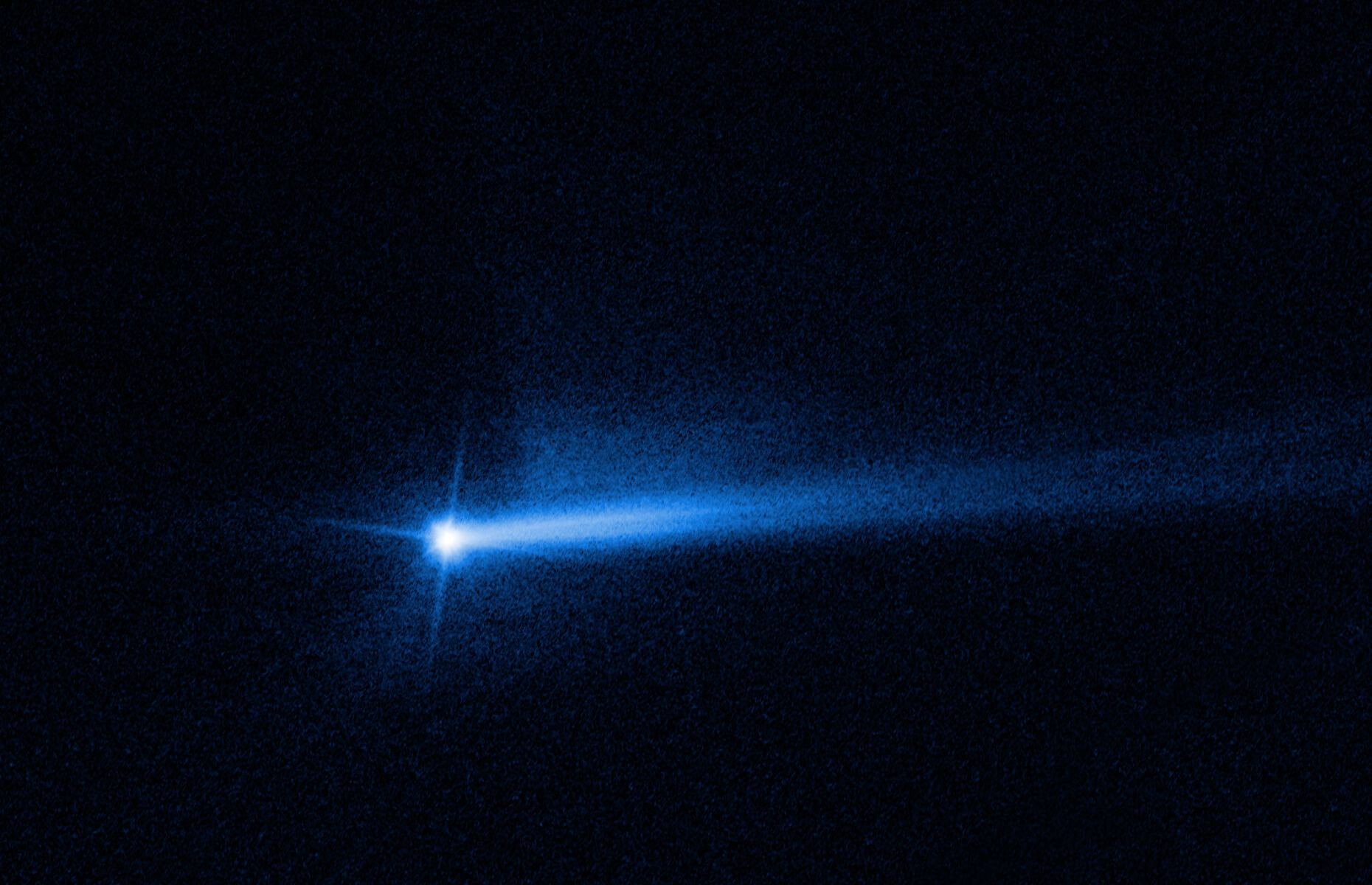
On September 26th, NASA’s Double Asteroid Redirection Test (DART) spacecraft collided with Dimorphos, the small moonlet that orbits the larger Near-Earth Asteroid (NEA) Didymos. The purpose was to test a planetary defense technique known as the kinetic impact method, where a spacecraft intentionally collides with a Potentially Hazardous Asteroid (PHAs) to alter its course. Based on a post-collision analysis, NASA determined that DART’s impact altered Dimorphos’ orbital period by 33 minutes and caused tons of rock to be ejected from its surface.
Since the collision, NASA has also been monitoring the cloud of ejecta produced by the impact to see how it has since evolved. The purpose of this is to better understand what the DART spacecraft achieved at the impact site, how much of it was delivered by the spacecraft, and how much was due to the recoil produced by the ejection. On December 15th, during the Fall Meeting of the American Geophysical Union (AGU) in Chicago, members of the DART team provided the preliminary analysis of their findings.
Continue reading “What Kind of an Impact did DART Have on Dimorphos? The Science Results are Here”Hubble and Spitzer Team up to Find a Pair of Waterworld Exoplanets
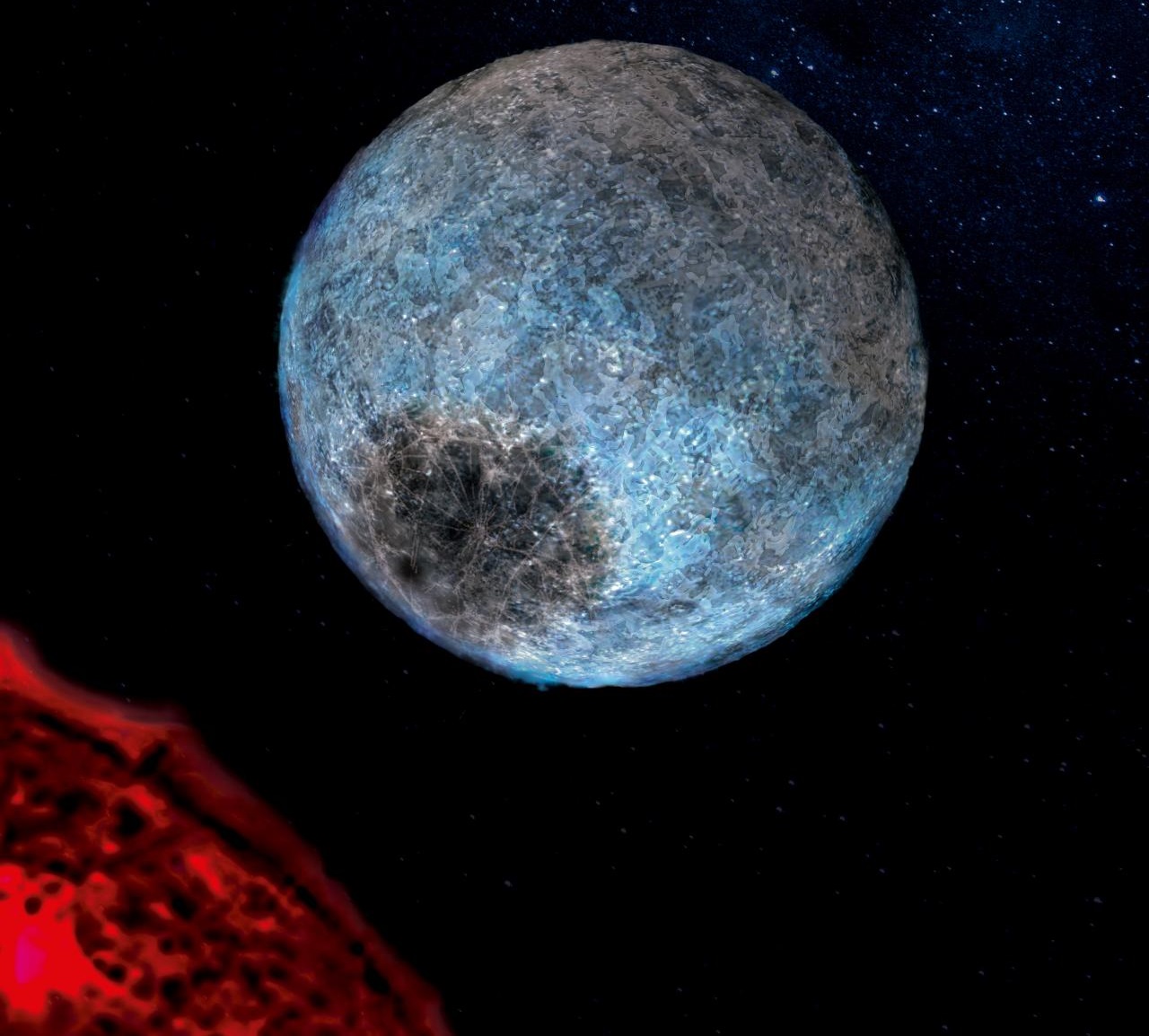
As of December 19th, 2022, 5,227 extrasolar planets have been confirmed in 3,908 systems, with over 9,000 more awaiting confirmation. While most of these planets are Jupiter- or Neptune-sized gas giants or rocky planets many times the size of Earth (Super-Earths), a statistically significant number have been planets where water makes up a significant part of their mass fraction – aka. “water worlds.” These planets are unlike anything we’ve seen in the Solar System and raise several questions about planet formation in our galaxy.
In a recent study, an international team led by researchers from the University of Montreal’s Institute for Research on Exoplanets (iREx) found evidence of two water worlds in a single planetary system located about 218 light-years away in the constellation Lyra. Based on their densities, the team determined that these exoplanets (Kepler-138c and Kepler-138d) are lighter than rocky “Earth-like” ones but heavier than gas-dominated ones. The discovery was made using data from NASA’s now-retired Spitzer Space Telescope and the venerable Hubble Space Telescope.
Continue reading “Hubble and Spitzer Team up to Find a Pair of Waterworld Exoplanets”Orion Splashes Down in the Pacific Ocean, Completing the Artemis I Mission
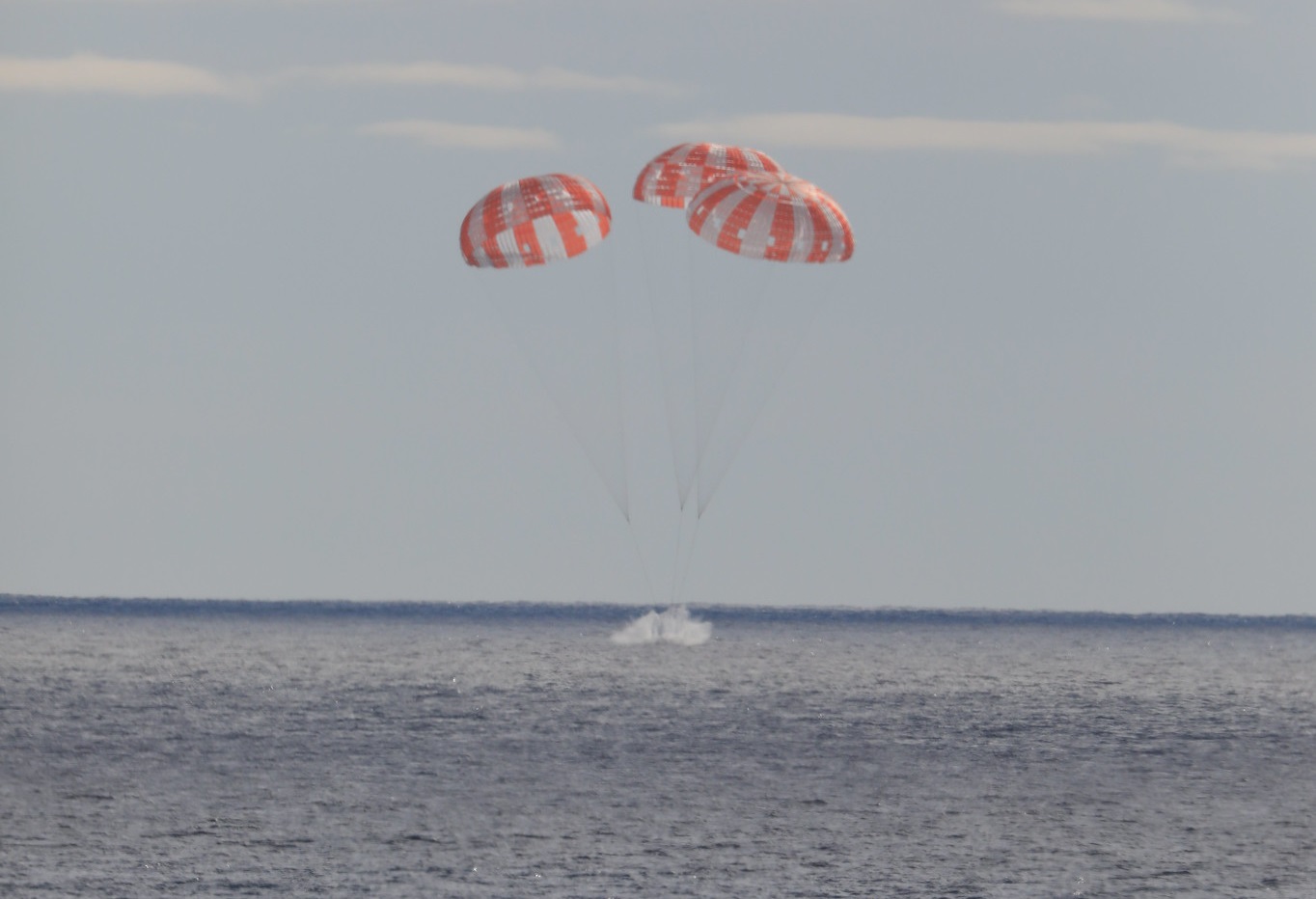
On December 11th, at 09:40 a.m. PST (12:40 p.m. EST), NASA’s Artemis I mission splashed down in the Pacific Ocean off the coast of Baja California. The return of the uncrewed Orion spacecraft marks the end of the Artemis Program’s inaugural mission, which launched on November 16th and validated the spacecraft and its heavy launch vehicle – the Space Launch System (SLS). During its 25.5-day circumlunar flight, the Orion spacecraft traveled more than 2.25 million km (1.4 million mi) and flew beyond the Moon’s orbit, establishing a new distance record.
Continue reading “Orion Splashes Down in the Pacific Ocean, Completing the Artemis I Mission”NASA Tests a Solar Sail Segment of its Enormous Solar Cruiser Mission
A team led by NASA’s Marshall Space Flight Center (MSFC) was recently selected to develop a solar sail spacecraft that would launch sometime in 2025. Known as the Solar Cruiser, this mission of opportunity measures 1653 m2 (~17790 ft2) in area and is about the same thickness as a human hair. Sponsored by the Science Mission Directorate’s (SMD) Heliophysics Division, this technology demonstrator will integrate several new solar sail technologies developed by various organizations to mature solar sail technology for future missions.
In a recent video released by NASA, we see engineers and industry partners at the MSFC in Huntsville, Alabama, unfurling a segment of the prototype solar sail. The video, taken on October 13th, shows how the teams used two 30.5 m (100-foot) lightweight composite booms to unfurl a 400 m2 (4,300 ft2) quadrant of the solar sail prototype for the first time. Once realized, the Solar Cruiser demonstrator will validate technologies that enable future missions to study the Sun, its interaction with Earth, and its extended atmosphere (aka. heliosphere).
Continue reading “NASA Tests a Solar Sail Segment of its Enormous Solar Cruiser Mission”NASA Releases Another Supercut of the Artemis I Mission, Showing the Launch and Flight Past the Moon
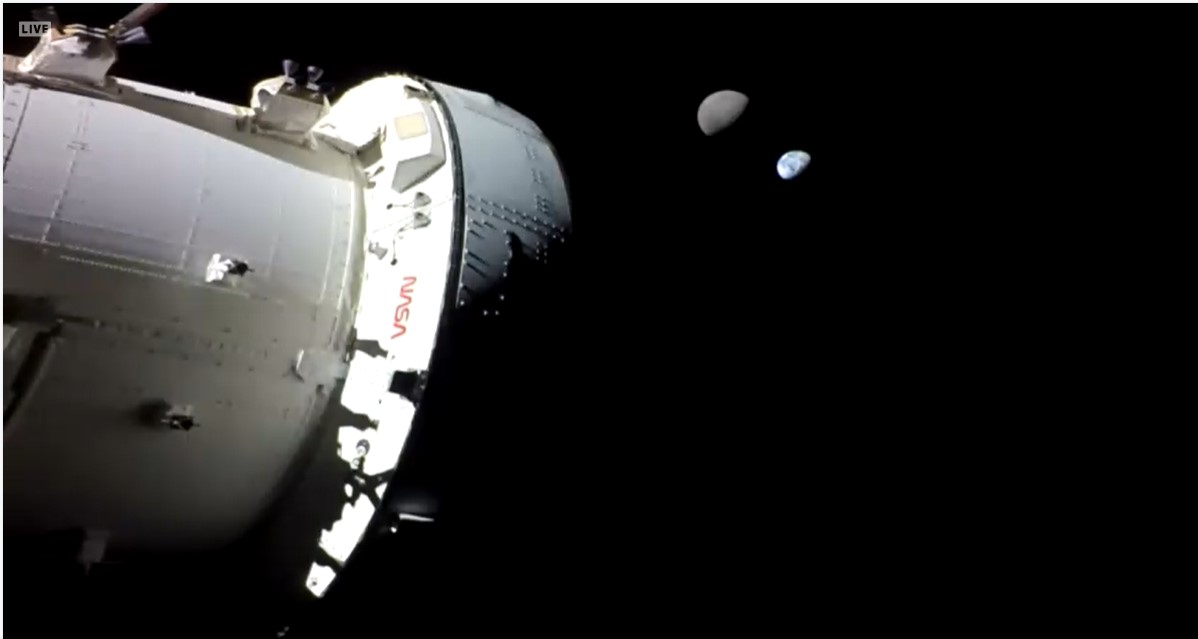
Artemis I is now on day seventeen of its mission, having just completed its distant retrograde orbit burn. This maneuver has placed the uncrewed Orion spacecraft (loaded with mannequins and sensors) on its way back to Earth. In honor of this historic mission that has traveled farther than any spacecraft in history, NASA has released a second supercut video of footage from the mission. The 1-minute, 36-second video includes highlights from the maiden launch of the Space Launch System (SLS) rocket and the Orion spacecraft making its circumlunar flight and looking back at the Earth-Moon system.
Continue reading “NASA Releases Another Supercut of the Artemis I Mission, Showing the Launch and Flight Past the Moon”SpaceX’s Super Heavy Fires 11 of its Engines in a Long-Duration Test
SpaceX is at it again! Yesterday (November 29th), the company conducted another static fire test with the Booster 7 (BN7) prototype at its Starbase in Boca Chica, Texas. The test began at 02:42 p.m. EST (11:42 a.m. PST) and saw eleven of the BN7’s thirty-three Raptor 2 engines fire for 13 seconds. While static fire tests have been the norm these past few months, this latest might be the prelude to the orbital test flight Musk has been hinting at for close to a year. News of the successful test was shared via Twitter, while NASA Spaceflight (NSF) shared footage of the test via Youtube.
Continue reading “SpaceX’s Super Heavy Fires 11 of its Engines in a Long-Duration Test”“Good Night Oppy” Beautifully Illustrates the Unbreakable Bond Between Humans and our Robotic Explorers
In January 2004, NASA rovers Spirit and Opportunity (aka “Oppy”) landed in two completely different locations on Mars. Their missions were only designed to last 90 sols (approximately 90 Earth days), but they exceeded these parameters, and then some. While Spirit lasted until 2010, Opportunity lasted another astonishing eight years, when it sent its last transmission to Earth in June 2018. During its more than 14-year tenure on the Red Planet, not only did Opportunity gain celebrity status as being the longest serving planetary robotic explorer in history, but it helped reshape our understanding of Mars’ present and past. Now with the help of Amazon Studios and available on Amazon Video, we can re-live the adventure of this incredible rover with Good Night Oppy.
Continue reading ““Good Night Oppy” Beautifully Illustrates the Unbreakable Bond Between Humans and our Robotic Explorers”NASA's Report Details a Dark Time in American History but Finds no Direct Evidence That Webb Fired People for Their Sexual Orientation

NASA has announced the release of the James Webb History Report, a document detailing their investigation into the namesake of the next-generation space telescope that took to space on December 25th, 2021. Months before it launched, the observatory became the subject of controversy when it was revealed that Webb was involved in the so-called “Lavender Scare.” After reviewing the relevant documents and collections located by their historians, NASA decided not to rename its flagship observatory.
The Final Report, titled “NASA Historical Investigation into James E. Webb’s Relationship to the Lavender Scare,” was compiled by NASA Chief Historian Brian C. Odom (Ph.D., MLIS) and can be accessed through NASA’s servers.
Continue reading “NASA's Report Details a Dark Time in American History but Finds no Direct Evidence That Webb Fired People for Their Sexual Orientation”

